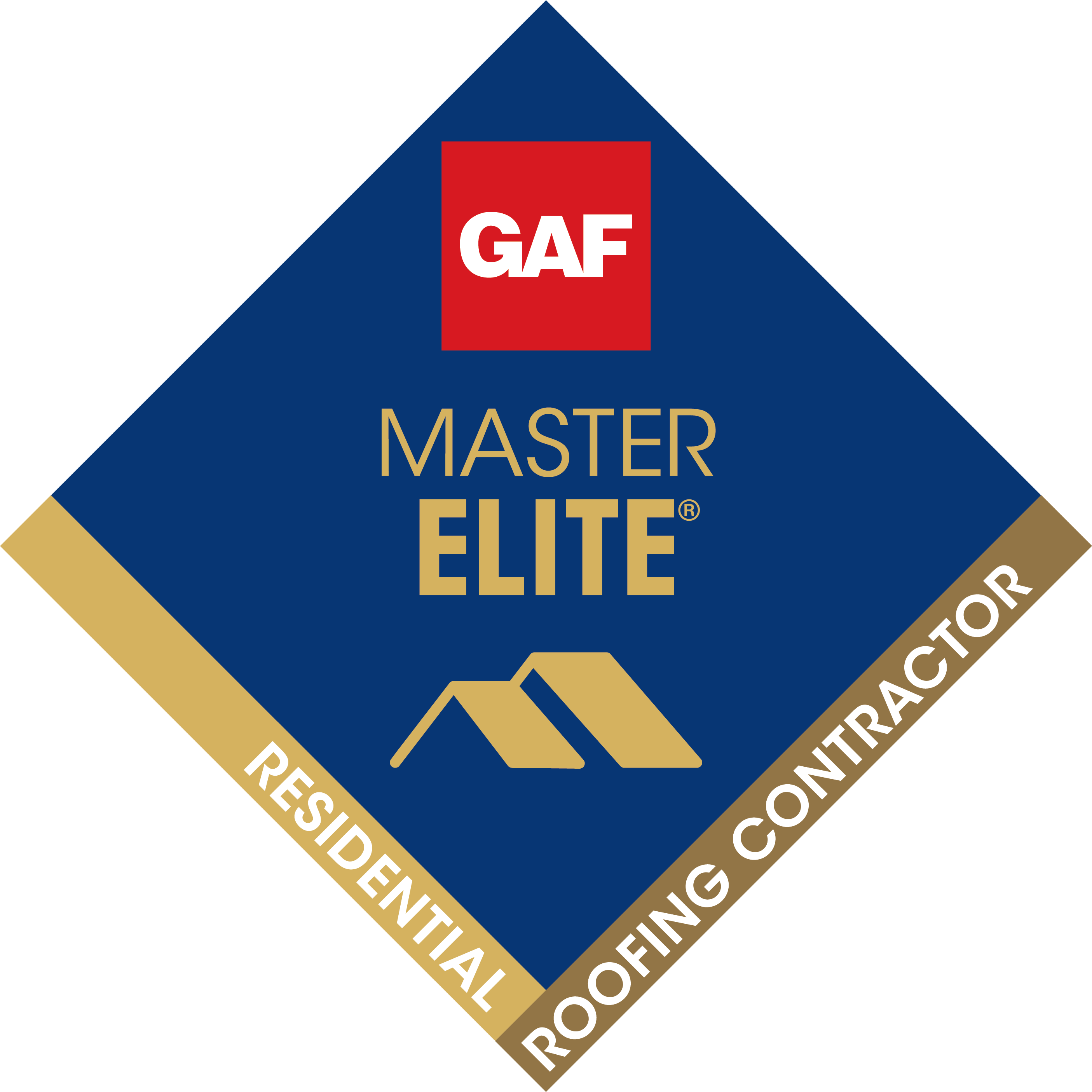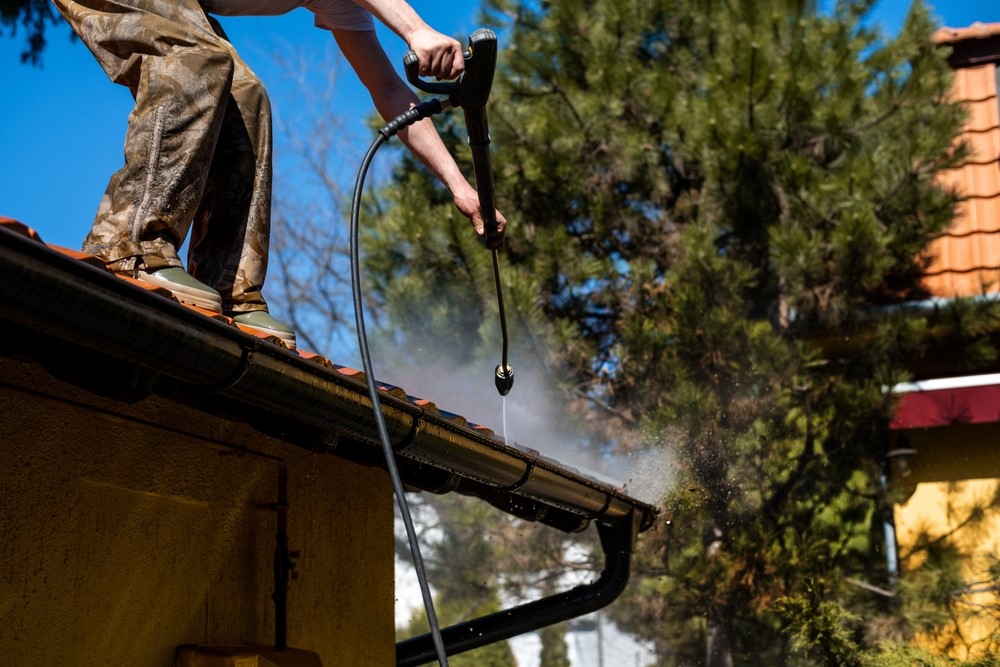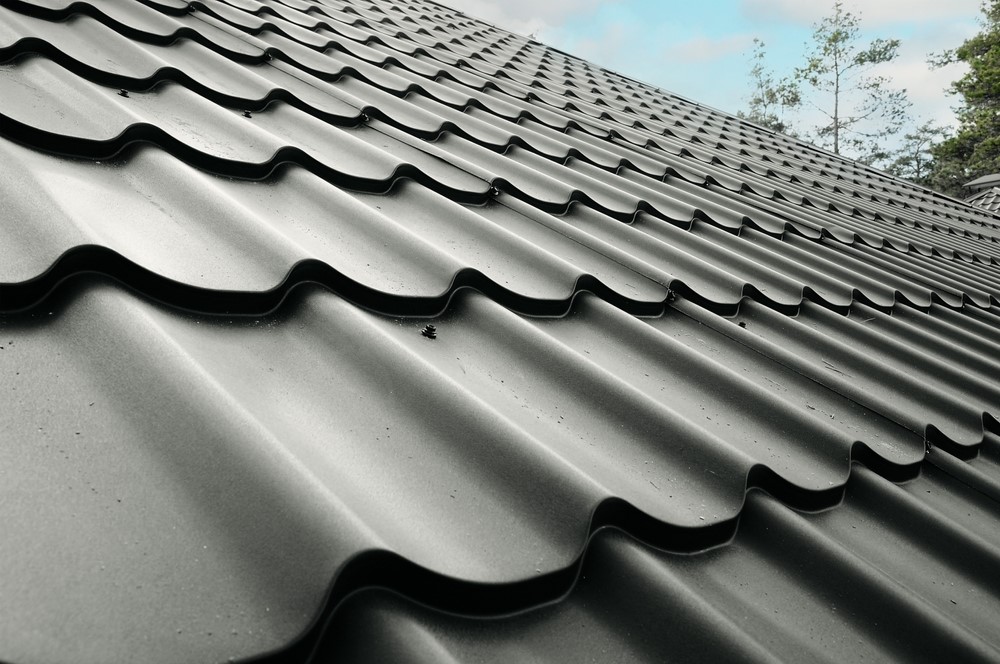When it comes to selecting the best roofing material for your property in Mount Vernon, Washington, it’s essential to consider the unique environmental factors and climate conditions of the area. Mount Vernon, located in Skagit County, lies in the heart of the Pacific Northwest region, surrounded by natural beauty and influenced by its specific climate patterns. Understanding the environment can help you make an informed decision between EPDM Roofs vs TPO Roofs, both of which have their advantages and suitability.
In this blog post, we will explore the key features of EPDM Roofs vs TPO Roofs, helping you make an informed decision about which option is best suited for your needs.
EPDM Roofs vs TPO Roofs: Exploring the Basics
What is EPDM Roofs?
EPDM (Ethylene Propylene Diene Monomer), often referred to as a “rubber roof,” is an acronym for ethylene propylene diene monomer. This name originates from the combination of chemicals (monomers) blended in different ratios to create this material. Primarily utilized on low-sloped or flat roofs, EPDM finds extensive application in commercial buildings. Nevertheless, it is also commonly employed in residential structures, including carports and patio roofs. Here are some key features of EPDM roofs:
- Material: EPDM roofing membranes are primarily composed of a durable synthetic rubber compound. They are available in large sheets or rolls, typically black in color.
- Durability: EPDM roofs are renowned for their longevity and resistance to weathering. They have a proven track record, with some roofs lasting 30 years or more. EPDM is resistant to ultraviolet (UV) radiation, ozone, and other environmental factors.
- Flexibility: EPDM roofs have excellent flexibility, allowing them to expand and contract with temperature fluctuations without cracking or peeling. This property makes them suitable for regions with extreme weather conditions.
- Easy Installation: EPDM roofs are relatively easy to install. They can be fully adhered using a special adhesive, mechanically attached, or ballasted with loose gravel or pavers.
- Low Maintenance: EPDM roofs require minimal maintenance. They are resistant to punctures and tears, and any necessary repairs are typically simple and inexpensive.
What is TPO Roof?
TPO, short for Thermoplastic Polyolefin, is a rapidly growing commercial roofing system in the market. It consists of a single layer of synthetic material with reinforcing scrim, designed for covering flat and semi-flat roofs. Despite its name, TPO is not actually plastic but rather a type of rubber, commonly a blend of polypropylene and ethylene-propylene rubber.
One of the primary benefits of TPO is its relatively low material cost compared to other single-ply membrane roofs like EPDM and rolled rubber roofing. This affordability factor makes TPO an attractive choice. Additionally, TPO is predominantly available in white, which serves the purpose of reflecting sunlight and reducing heat buildup within the building. Here are the key characteristics of TPO roofs:
- Material: TPO roofs are made from a blend of polypropylene and ethylene-propylene rubber, creating a thermoplastic membrane. They are available in rolls and sheets, usually white or light-colored to enhance reflectivity.
- Energy Efficiency: TPO roofs are highly reflective, meaning they reflect a significant portion of the sun’s heat away from the building. This reflective property helps reduce the absorption of heat into the structure, resulting in lower cooling costs.
- Durability: TPO roofs offer excellent resistance to impact, punctures, and tears. They can withstand harsh weather conditions, including hail, high winds, and extreme temperatures.
- Installation Options: TPO roofs can be installed using various methods, such as fully adhered, mechanically attached, or heat-welded. The choice depends on the specific project requirements and the preferences of the roofing contractor.
- Environmental Benefits: TPO roofs are considered environmentally friendly. They are recyclable and can contribute to energy efficiency, making them a sustainable roofing option.
In summary, EPDM roofs are known for their time-tested reliability, flexibility, and low maintenance requirements. On the other hand, TPO roofs offer cutting-edge energy efficiency, durability, and environmental benefits. Understanding the unique characteristics of each roofing material will help you make an informed decision based on your specific needs and preferences.

Battle of the Roofs: EPDM Roofs vs TPO Roofs – Unveiling the Pros and Cons
EPDM (Ethylene Propylene Diene Monomer) and TPO (Thermoplastic Olefin) are both popular choices for roofing materials. When it comes to determining which one is best for Mount Vernon, WA, there are several pros and cons to consider. Let’s explore them below:
EPDM Roofs:
Pros:
- Durability: EPDM roofs are known for their exceptional durability. They can withstand extreme weather conditions, including high winds, heavy rain, and hail, making them suitable for Mount Vernon’s climate.
- Cost-effectiveness: EPDM roofs are generally more affordable compared to other roofing options. The materials are reasonably priced, and the installation costs tend to be lower, making them a cost-effective choice for homeowners in Mount Vernon.
- Easy installation: EPDM roofs are relatively easy to install, which can save both time and labor costs during the installation process. This can be beneficial for homeowners looking to replace their roofs quickly.
- Low maintenance: EPDM roofs require minimal maintenance. They are resistant to UV radiation and can last for many years without significant wear and tear. This can be advantageous for homeowners who prefer a low-maintenance roofing option.
Cons:
- Limited color options: EPDM roofs are primarily available in black or dark gray colors. If you prefer a wider range of color choices or a specific aesthetic for your roof, the limited color options may be a drawback.
- Vulnerability to punctures: While EPDM roofs are generally durable, they can be susceptible to punctures from sharp objects or debris. Regular inspection and maintenance are necessary to identify and address any potential puncture risks promptly.
- Heat absorption: EPDM roofs have a tendency to absorb and retain heat, which can increase the cooling needs during hot summers. This may result in higher energy consumption and costs for maintaining a comfortable indoor temperature.
TPO Roofs:
Pros:
- Energy efficiency: TPO roofs have excellent reflective properties, meaning they can reflect sunlight and reduce heat absorption. This can help in maintaining a cooler indoor temperature, leading to potential energy savings and reduced cooling costs during warm months in Mount Vernon
- Flexibility: TPO roofing membranes are known for their flexibility, which allows them to accommodate building movements and temperature changes. This flexibility makes them less prone to cracks or leaks, making them suitable for regions with varying weather conditions.
- Resistance to algae and mold growth: TPO roofs are resistant to algae and mold growth, which can be beneficial in damp or humid climates like Mount Vernon. This resistance helps maintain the aesthetics and longevity of the roof.
- Aesthetically pleasing: TPO roofs are available in a variety of colors, providing homeowners with more options to match their preferred aesthetics and design choices.
Cons:
- Longevity concerns: While TPO roofs have improved in terms of durability over the years, some concerns remain about their long-term performance and longevity compared to other roofing materials. However, with proper installation and regular maintenance, their lifespan can still be substantial.
- Price: TPO roofs are generally more expensive than EPDM roofs. The materials and installation costs can be higher, which may pose a financial challenge for homeowners with budget constraints.
- Installation complexity: TPO roofs require precise installation techniques to ensure proper sealing and prevent potential issues such as leaks. Improper installation can compromise the effectiveness and lifespan of the roof.
Ultimately, the choice between EPDM and TPO roofs for Mount Vernon, WA, depends on your specific needs, preferences, and budget. Consulting with roofing professionals in your area can help you make an informed decision based on the unique requirements of your home and local climate.
EPDM Roofs vs TPO Roofs: Installation Process And Cost Considerations
Here, we will explore the detailed installation processes of EPDM roofs and TPO roofs while shedding light on important cost considerations.
EPDM Roofs Installation
- Roof Preparation: The existing roof surface is inspected and prepared by removing debris, repairing any damaged areas, and ensuring a clean and smooth substrate.
- Adhesive Application: A specially formulated adhesive is applied to the roof substrate, and the EPDM membrane is carefully rolled out and positioned over the adhesive.
- Seam Sealing: EPDM seams are sealed using either a liquid adhesive or specialized seam tape to ensure a watertight bond between the membrane sheets.
- Flashing Installation: Flashing, such as metal edge trim and penetration boots, is installed to provide additional protection at vulnerable areas, such as roof edges and pipes.
- Final Inspection: The installed EPDM roof is inspected for any imperfections or loose edges and trimmed, if necessary, to ensure a neat and professional finish.
TPO Roofs Installation
- Roof Preparation: Similar to EPDM installation, the roof surface is inspected, cleaned, and prepared to ensure a proper substrate for TPO membrane application.
- TPO Membrane Placement: TPO sheets are rolled out onto the roof surface and mechanically attached using screws, plates, or heat-welding techniques, depending on the specific installation method.
- Heat-Welding Seams: TPO seams are heat-welded together using specialized hot air guns, creating a strong and seamless bond between the membrane sheets.
- Edge Detailing: Edge detailing involves installing edge trims and securing them to provide a finished appearance and enhance the roof’s protection against wind uplift.
- Quality Assurance: The installed TPO roof is inspected to ensure proper seam integrity, edge detailing, and overall adherence to installation guidelines.
EPDM Roofs vs TPO Roofs: Cost Considerations
EPDM Roofs: EPDM roofs generally have a lower upfront cost compared to TPO roofs. The materials are relatively inexpensive, and the installation process is straightforward, resulting in cost savings. Additionally, EPDM roofs have a long lifespan, reducing the need for frequent replacements and associated costs.
TPO Roofs: TPO roofs may have a slightly higher upfront cost due to the materials’ manufacturing process and energy-efficient properties. However, TPO roofs offer potential long-term savings through reduced energy consumption and lower cooling costs. The durability and ease of installation of TPO roofs can also contribute to cost savings over time.
It’s important to note that the actual installation process and costs can vary depending on the specific roofing contractor, location, and the unique requirements of your project. Consulting with a professional roofing expert in Mount Vernon WA will provide you with accurate information tailored to your situation.
FAQs About EPDM Roofs vs TPO Roofs
- What is EPDM roofing?
EPDM (Ethylene Propylene Diene Monomer) roofing is a type of synthetic rubber roofing membrane. It is widely used in commercial and residential applications due to its durability and cost-effectiveness.
- What is TPO roofing?
TPO (Thermoplastic Olefin) roofing is a type of single-ply roofing membrane. It is made from a blend of rubber and plastic compounds. TPO roofs are popular in commercial applications because of their energy efficiency and ease of installation.
- How long do EPDM roofs last?
EPDM roofs have a typical lifespan of 20 to 30 years. With proper installation, maintenance, and periodic inspections, they can even last longer.
- How long do TPO roofs last?
TPO roofs have a similar lifespan to EPDM roofs, generally lasting around 20 to 30 years. However, some manufacturers claim their TPO roofs can last up to 40 years.
- Which roofing material is more resistant to UV rays, EPDM or TPO?
TPO roofing tends to be more UV resistant than EPDM roofing. TPO membranes often include additives that enhance their UV stability, making them better suited for areas with high sun exposure.
- Are EPDM roofs prone to leaks?
EPDM roofs can develop leaks if they are not installed properly or if they experience damage over time. However, when installed correctly and maintained regularly, EPDM roofs are generally reliable and less prone to leaks.
- Are TPO roofs prone to leaks?
TPO roofs can also develop leaks if not installed correctly or if they suffer from punctures or damage. However, with proper installation and regular maintenance, TPO roofs can provide excellent leak resistance.
- Which roofing material is more resistant to punctures, EPDM or TPO?
TPO roofing is generally more puncture-resistant than EPDM roofing. TPO membranes are reinforced with polyester or fiberglass, providing better resistance against punctures from foot traffic or falling debris.
- Which roofing material is more cost-effective, EPDM or TPO?
EPDM roofing is typically more cost-effective than TPO roofing. EPDM membranes are generally less expensive to manufacture and install, making them a popular choice for budget-conscious projects.
- Can EPDM or TPO roofs be installed in cold climates?
Both EPDM and TPO roofs can be installed in cold climates. However, EPDM roofing has better resistance to extremely cold temperatures, which can make it a preferred choice in regions with harsh winters.
- Which roofing material is more environmentally friendly, EPDM or TPO?
Both EPDM and TPO roofs are considered environmentally friendly options. EPDM is often preferred for its durability and long lifespan, reducing the need for replacement. TPO roofs can offer energy efficiency benefits, potentially reducing heating and cooling costs.
Which is the Best Roof for Mount Vernon WA?
When considering which is the best roof type for Mount Vernon WA, a choice between EPDM Roofs vs TPO Roofs for Mount Vernon WA, several factors should be taken into account such as the basics of EPDM roofs and TPO roofs, their pros and cons along with installation processes and cost consideration.
EPDM roofs offer durability and longevity, with resistance to UV radiation, ozone, and extreme temperatures. They provide reliable protection against the elements and are known for withstanding heavy rain, snow, and hail. However, EPDM roofs may require more maintenance and can absorb heat, potentially increasing cooling costs.
TPO roofs are favored for their energy efficiency and reflective properties. They can help reduce cooling costs by reflecting sunlight, making them suitable for warmer climates. TPO roofs are easy to install and require lower maintenance, potentially resulting in long-term cost savings. However, their performance in extreme weather conditions can vary, and quality installation is crucial.
Installation processes and cost considerations are important factors as well. EPDM roofs are typically installed in large sheets, requiring skilled professionals. The cost can vary based on factors such as roof size and complexity. TPO roofs are relatively easy to install, and installation costs can be influenced by similar factors.
To make an informed decision, factors such as climate, maintenance needs, energy efficiency, and budget considerations should be evaluated. Consulting with a professional roofing contractor in Mount Vernon WA who has experience in the area like Cascade Roofing Company Inc. can provide valuable guidance. Ultimately, the choice between EPDM and TPO roofs for Mount Vernon WA should align with specific requirements and preferences to ensure the best roofing option is selected.
Subscribe to Cascade Roofing Company's Blog








Comments